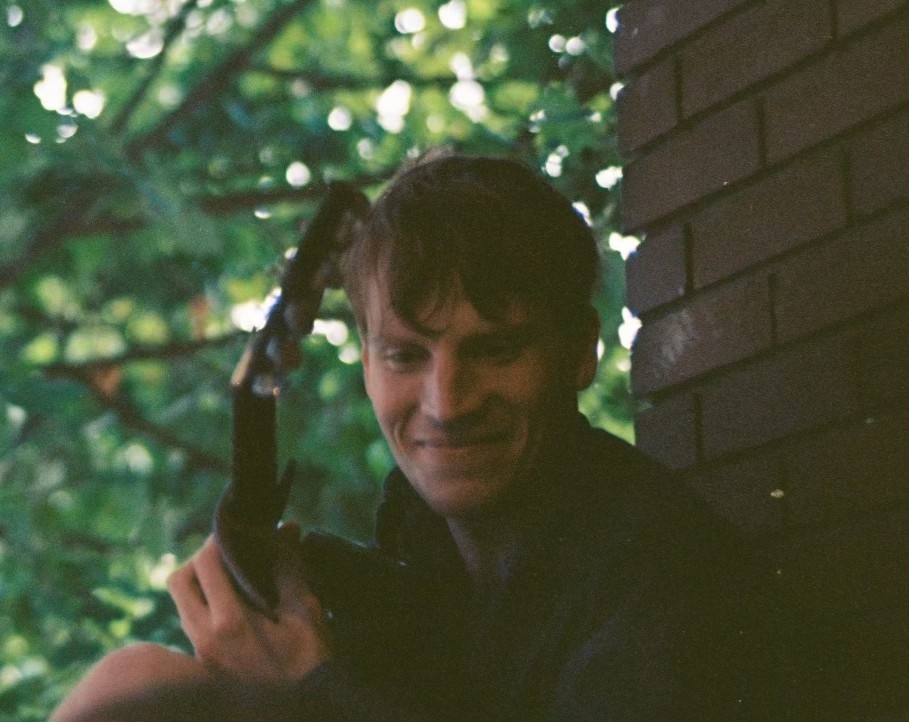Roeland Wiersema
About me

I am a researcher at the Flatiron Institute Center for Computational Quantum Physics (CCQ) in New York.
Biography
I grew up in the Netherlands, in the city of Nijmegen. I did my undergraduate studies at Radboud University, where I pursued a bachelor in Physics and Astronomy and a master's in Particle and Astrophysics. Under the supervision of Bert Kappen, I wrote a master's thesis on quantum-inspired machine learning. During my master's I founded a machine learning consultancy company with three of my friends. After completing some projects we decided to pursue different directions with some of us leaving for academia and some headed to industry. I decided on academia, and started my PhD at the University of Waterloo and the Vector Institute in 2020. I worked on variational quantum computing and machine learning for quantum many-body physics under the supervision of Juan Carrasquilla and Roger Melko. During that time, I also enjoyed working and interacting with everyone at the PIQUIL, Roger's research group at the Perimeter Institute. In 2024, I defended my PhD after writing a thesis titled Quantum Computing: Optimization and Geometry (found here.). During my PhD, I worked with Xanadu Quantum Technologies on several projects, and did an internship at Los Alamos National Laboratory.Current research interests
My research is focused on computational methods for quantum many-body physics. Some of the numerical methods that I use in my research are quantum computing, tensor networks and neural quantum states.Neural Quantum States for ground states and time dynamics
At the moment, I'm focussing on machine learning to solve the many-body problem. Having struggled greatly in [1] to make t-VMC work for annealing of a 2D spin glass, I am currently exploring other approaches for evolving variational wave functions in time. In the context of ground state searches, my collaborators are pushing the limits of what can be done with RNN wave functions. In [3,4], we were able to perform accurate simulations of Heisenberg antiferromagnets up to systems of size 36x36. The primary reason That we were able to access such large scales is the unique structure of the RNN, which allows one to reuse parameters at different length scales. We found that RNNs can be reliably improved by increasing training time, hinting at the fact that it is not the expressivity, but the optimization of the RNN that is the bottleneck for accurate simulations. We are currently exploring different approaches to improve this optimization.Related works:
[1] King,...,Wiersema et al. Computational supremacy in quantum simulation. arXiv preprint arXiv:2403.00910, 2024.
[2] Hibat-Allah, Inack, Wiersema et al., Variational neural annealing , Nature Machine Intelligence volume 3, pages 952–96, 2021
Differential geometry approaches in variational quantum computing
In my PhD I was captured by the beauty of differential geometry and have tried to use these ideas in my work as much as I can. In the context of variational quantum computing, I have pursued two major ideas. First, can we understand a variational quantum circuits as a gradient flow over a particular Lie group [1,2,3]? Secondly, can we use the geometric ideas to come up with new optimization strategies for variational quantum circuits and quantum control [4,5,6,7]?Related works:
[1] Wiersema et al., Optimizing quantum circuits with Riemannian gradient flow. Phys. Rev. A, 107(6):062421, Jun 2023
[2] Wiersema et al., Classification of dynamical Lie algebras of 2-local spin systems on linear, circular and fully connected topologies npj Quantum Information volume 10, 110, 2024
[3] Kokcu, Wiersema et al., Classification of dynamical Lie algebras generated by spin systems on undirected graphs. arXiv:2409.19797, 2024
[4] Wiersema et al., Geometric Quantum Machine Learning with Horizontal Quantum Gates. Phys. Rev. Research 7, 013148, 2025
[5] Wiersema et al., Here comes the SU(N): multivariate quantum gates and gradients. Quantum, 8:1275, March 2024
[6] Lewis, Wiersema et al., Geodesic Algorithm for Unitary Gate Design with Time-Independent Hamiltonians. Phys. Rev. A 111, 052618, 2025
[7] Lewis, Wiersema et al., Quantum Optimal Control with Geodesic Pulse Engineering. arXiv:2508.16029, March 2024
Circuit compilation with tensor networks and quantum optimal control
This research direction lies at the intersection of quantum information, machine learning and quantum computing and combines different elements of each area to advance an important area of research: the efficient compilation of unitaries for a quantum computer. Inspired by work by Caro et al. on out-of-distribution generalization for learning quantum dynamics my collaborators and I created a compiler that compresses an efficient representation of the unitary generated by a many-body Hamiltonian into a variational ansatz. This state-of-the-art unitary compiler allows one to generate low-depth circuits for evolving a many-body state through time, which saves a significant amount of expensive quantum gates. We are actively working on improving this compiler and extending it to 2D.Related works:
[1] Wiersema, Zhang et al., Scalable quantum dynamics compilation via quantum machine learning. arxiv:2409.16346, 2024
[2] D'Anna, Zhang, Wiersema et al., Circuit compression for 2D quantum dynamics. arxiv:2507.01883, 2025